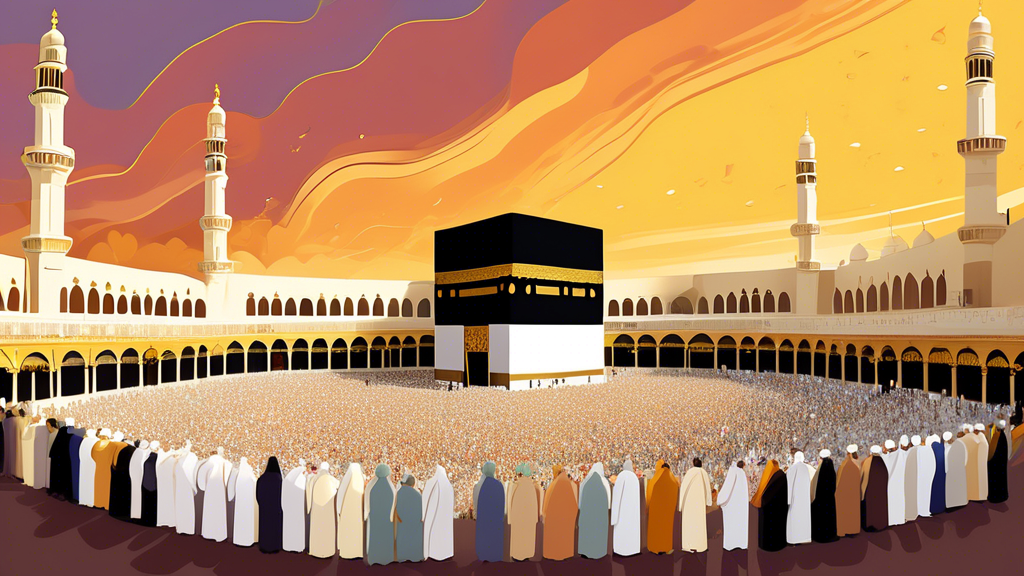Umrah, often referred to as the ‘minor pilgrimage’ or ‘lesser pilgrimage’, is an Islamic ritual and a spiritual journey undertaken by Muslims to Mecca, Saudi Arabia. Unlike Hajj, which is one of the Five Pillars of Islam and must be performed during specific days of the Islamic calendar, Umrah can be performed at any time of the year. Despite its non-obligatory nature, Umrah holds profound spiritual significance for Muslims, offering a pathway to rejuvenation, penance, and a closer connection with Allah.
The Rituals of Umrah
Umrah involves several key rituals, which start with entering a state of Ihram— a sacred state in which a pilgrim must follow several prescribed prohibitions. Men don specific seamless white garments, symbolizing purity and unity among all pilgrims, regardless of their social or economic status. Women continue to dress modestly and must cover their hair.
The core rituals of Umrah include the Tawaf, Sa’i, and Halq or Taqsir. Tawaf involves circumambulating the Kaaba, Islam’s holiest site, seven times in a counter-clockwise direction. This act symbolizes the unity of believers in the worship of the One God, as they move in harmony around the Kaaba, while reciting prayers and supplications.
Following the Tawaf, pilgrims perform Sa’i, walking seven times between the hills of Safa and Marwah. This is a re-enactment of Hagar’s frantic search for water for her son Ishmael, an ordeal that Muslims believe God rewarded by springing forth the Zamzam Well, which still flows today. The ritual concludes with Halq or Taqsir, where pilgrims either shave their heads (Halq) or cut a short portion of their hair (Taqsir), symbolizing a state of purification and renewal.
Spiritual Significance
The performance of Umrah is highly significant spiritually. It is considered a form of cleansing for the soul, an expiation for sins committed between it and the previous Umrah, and a way to renew one’s faith and relationship with Allah. The pilgrimage allows believers to reflect on their lives, seek forgiveness, and make supplications. This introspection and subsequent spiritual rejuvenation reinforce the pilgrim’s commitment to Islamic tenets.
Umrah in the Context of Islamic History
The acts performed during Umrah are deeply rooted in Islamic tradition and history. When the Prophet Muhammad, peace be upon him, and his followers were living in Mecca, they were eventually forced to flee to Medina due to escalating persecution. Years later, the Prophet returned to Mecca to perform Umrah, embodying a profound act of peace and forgiveness shown towards the Quraysh, the tribe that once expelled him.
Socio-Cultural Impact
The social and cultural dimensions of Umrah should not be underestimated. For many Muslims, the journey to Mecca is not only a personal spiritual milestone but also a powerful communal experience. Performing Umrah brings together Muslims of all races, colors, and backgrounds, helping to foster a sense of global Islamic brotherhood. This unity is fundamental to the Islamic concept of Ummah, or the worldwide community of Muslims.
Conclusion
Umrah, while lesser in scale than Hajj, is an immensely significant practice within Islam, providing a unique opportunity for spiritual renewal and personal reflection. Its performance is a profound experience that every Muslim is encouraged to undertake, should the means and circumstances allow. By engaging in these sacred rituals, believers reaffirm their faith and commitments to the principles of Islam, making the journey of Umrah a transformative pilgrimage that resonates deeply within the heart of every participant.
